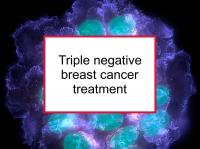Some U.S. breast cancer patients are undergoing an experimental procedure using their own abdominal fat stem cells in breast reconstruction. While the safety of such procedures is being studied in numerous clinical trials in Europe, breast reconstruction using fat stem cells is currently not generally available in the U.S.
This is in part because concerns that fat stem cell transplants might result in additional breast cancer have not been fully answered by research to date. One study reported that breast tumors can commandeer fat stem cell functions to advance tumor progression. Now a new study has reported that fat stem cells from healthy women can stimulate tumor growth and metastasis in a mouse model of triple negative (ER-/PR-/HER2-) breast cancer.
Lipofilling is used to correct modest breast defects
Using the body's own fat (autologous fat) to fill in defects resulting from lumpectomy and other breast conserving surgery has the advantage of low risks of graft rejection and major surgical side effects. The primary limitation of lipofilling is unpredictable graft resorption, which has been estimated to range from 25 to 80%. Graft resorption results in a smaller volume of tissue than desired in the treated area.
This appears to be the result of insufficient blood supply and a lack of new blood vessel development (angiogenesis). Apparently, some transplanted fat cells survive (receiving a blood supply through microangiogenesis) and serve as a scaffold for existing breast cells to enter and fill while others do not.
The desire to reduce graft resorption has led to a number of strategies to maintain fat volume. These include using enhanced stromal vascular fraction, performing fat grafting with platelet-rich plasma, and enriching the fat graft with fat stem cells before transplantation.
Concerns about the safety of using fat stem cells
Most women undergoing complete breast reconstruction after a mastectomy use implants or a TRAM (transverse rectus abdominus musculocutaneous) flap. As noted above, using fat (adipose-derived) stem cells from the abdomen or elsewhere in what is essentially a multi-step reverse liposuction procedure is not currently permitted by the FDA in the U.S. There are a number of concerns that have been raised:
- How does the isolation and purification of adipose-derived stem cells affect them? It has been suggested that both the need to culture fat stem cells before their use, as well as their proangiogenic, anti-apoptotic and immunomodulatory characteristics, could serve as tumor promoters.
- What are the effects of steps taken to ensure post graft stem cell survival? For example, using basic fibroblast growth factor (FGF2) to enhance angiogenesis or basement membrane extract (BME) to increase proliferation.
- Fat tissue-derived stem cells have the capacity to differentiate into multiple cell lineages, not just fat cells. Is it possible for them to produce breast cancer cells?
- What is the effect of the presence of adipose-derived stem cells on existing tumors or vice versa?
Latest research finds fat stem cells can stimulate metastasis
The study referenced at the beginning of this news article was designed to evaluate the impact of adipose tissue-derived stromal/stem cells (fat stem cells) from the abdomens of three healthy women donors in an animal model of triple negative breast cancer. Mice implanted with human MDA-MB-231 triple negative breast cancer cells normally quickly develop tiny metastases in multiple organs.
The authors first demonstrated that indirect and direct co-culture of MDA-MB-231 cells with fat stem cells had no effect on MDA-MB-231 growth. However, both indirect co-culture and adipose tissue-derived stromal/stem cell-conditioned medium stimulated the migration of MDA-MB-231 cells.
In addition, fat stem cells from two of the donors stimulated primary tumor development in mice when co-injected with MDA-MB-231 cells. The fat stem cells from both of these donors also stimulated metastasis. The fat stem cells were shown to be viable and integrated with MDA-MB-231 cells in the primary tumor.
Mice co-injected with MDA-MB-231 cells and fat stem cells developed visible metastases to the lung and liver not seen in mice injected with MDA-MB-231 cells alone.
The authors conclude that fat stem cells derived from the abdomens of two healthy donors stimulated metastasis of MDA-MB-231 breast tumor xenografts to multiple mouse organs.
